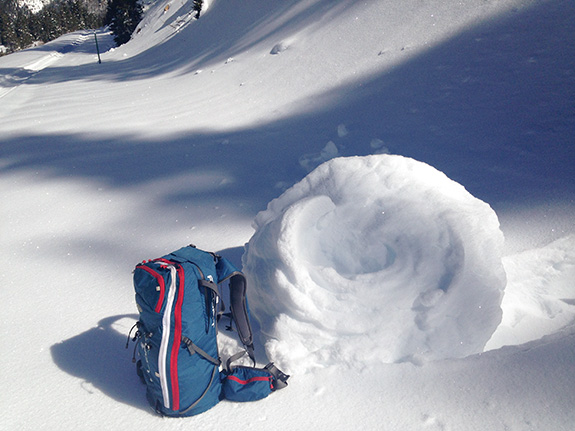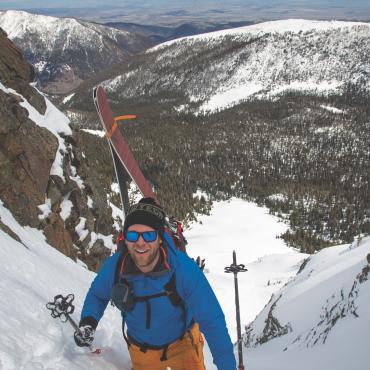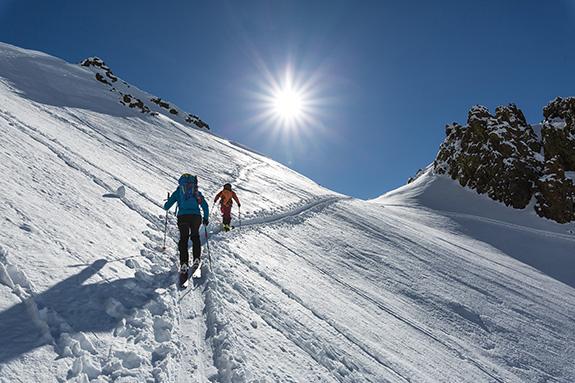Hot Topic
Anticipating warm-weather avalanche problems.
There is no better time for backcountry skiing and riding than the spring. Long days, comfortable temps, sunshine, and deep snow—perfect.
With the changing season, however, comes a changing avalanche paradigm. Traditional wisdom holds that a spring snowpack is largely stable, and that this is the time to ski those steep, exposed lines we’ve been eyeballing since December. And it’s true—kind of.
With a long cycle of repeated melting and freezing, a snowpack does become very strong, but before that happens, there is often a period of instability related to rapid warming. Our problems during this time are typically wet-slab and loose-wet avalanches.
Here’s a primer on how to identify and avoid these problems—and shred safely all the way into summer.
Loose-Wet
Though common and often small, loose-wet slides aren’t to be ignored—they can be deadly in their own right, and signal ripe conditions for more destructive wet-slab avalanches. When snow becomes saturated, it can sluff down steep slopes, entraining more snow in distinctive, fan-shaped inverted Vs. These can be deceptively powerful, and can easily knock skiers and riders off their feet, over cliffs, or into other terrain traps.
Warning Signs
Above-freezing temperatures and direct sun. Slopes can warm remarkably quickly in the spring—watch the forecast and be done skiing early.
Wet snow that’s boot-top deep. That’s a lot of wet, heavy slop—and it could start moving.
Rollerballs and pinwheels. Snow is starting to move, and ski quality is probably junk—you’re already too late!
Fan-shaped point releases on steep terrain. It’s happening! Solar road cuts and steep slopes below rock outcroppings (which warm fastest) are great indicator slopes.

Rollerballs: more dangerous than rollergirls
Avoidance
Luckily, loose-wet slides are easy to predict and avoid. If the forecast is for warm, sunny weather, plan to be off the slopes by early afternoon at the latest. And if there’s no overnight freeze, be wary—that snow is very weak.
Wet Slabs
Liquid meltwater percolating through the snowpack can erode delicate bonds between layers (particularly persistent weak layers), and cause very large, destructive slab avalanches, sometimes consisting of the entire season’s snowpack. Due to their depth and weight, these are some of the largest avalanches in southwest Montana, taking down mature timber, making new paths, and even gouging the earth. Serious business.
Warning Signs
The first big warmup of the season (above freezing). Watch out: the snowpack is adjusting to a very rapid change, and this is a dangerous time.
Consecutive days and nights without freezing. Yikes: the skiing is going to be garbage anyway—go biking.
Rain-on-snow events. Run away: rain produces avalanches. Not to mention terrible skiing.
Recent loose-wet avalanches. Can be indicators of larger events to come.
Avoidance
Wait until the snowpack has undergone several warmups and hard freezes, and then start early. Plan to be off the slopes by the time they become unstable. And if the weather is very warm, sunny, or rainy, without overnight freezes, be very cautious—the snowpack may be hanging in the balance.
Drew Pogge is a backcountry ski guide and avalanche educator; he owns Big Sky Backcountry Guides and the Bell Lake Yurt.










